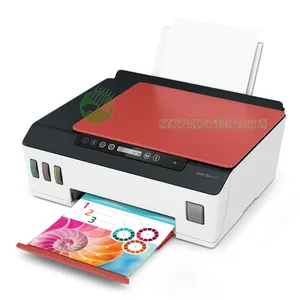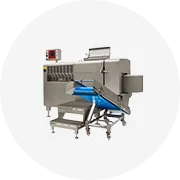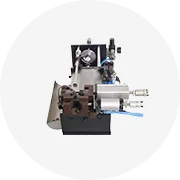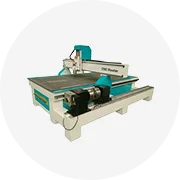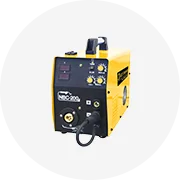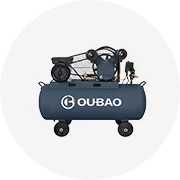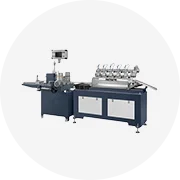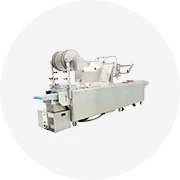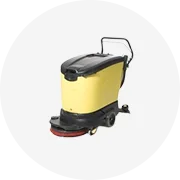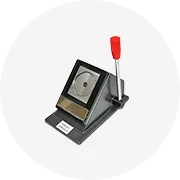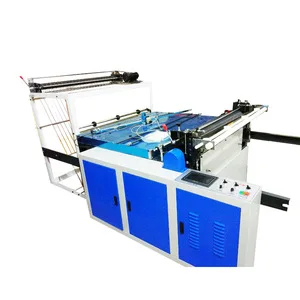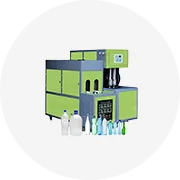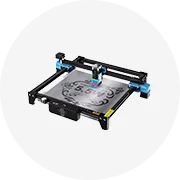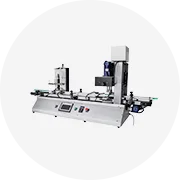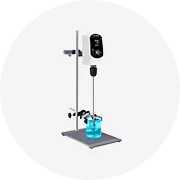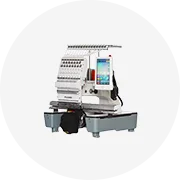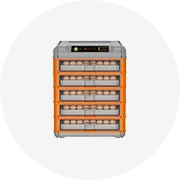Phổ biến trong ngành của bạn

Năm Điểm Chất Lượng Cao Đầy Đủ Cơ Thể Leo An Toàn Khai Thác An Toàn Vành Đai Cho Cao Độ Cao Xây Dựng Làm Việc
Sẵn sàng vận chuyển
6,55 US$ - 9,34 US$
Đơn hàng tối thiểu: 2 Cái
Vận chuyển mỗi chiếc: 46,65 US$


Ce mùa thu bảo vệ cuộc sống an Ninh với dây cứu hộ giàn giáo làm việc Lineman điện vành đai an toàn khai thác cho xây dựng
13,10 US$ - 14,60 US$
Đơn hàng tối thiểu: 50 Cái

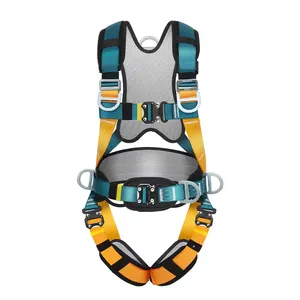
CE Mùa Thu Bảo Vệ Cuộc Sống An Ninh 5 Điểm Điều Chỉnh Lưng D-Ring Grommet Eo Đầy Đủ Cơ Thể Điện An Toàn Vành Đai Khai Thác
20,80 US$ - 21,60 US$
Đơn hàng tối thiểu: 50 Cái


Chất Lượng Cao Năm Điểm Cao Độ Cao Làm Việc An Toàn Khai Thác Mùa Thu Bảo Vệ Vành Đai An Toàn
Sẵn sàng vận chuyển
6,55 US$ - 9,34 US$
Đơn hàng tối thiểu: 2 Cái
Vận chuyển mỗi chiếc: 46,65 US$


Bán buôn Tự Động Các Bộ Phận Xe Buýt Phổ Chất Liệu Khóa Khẩn Cấp Xe Tải 3 Điểm An Toàn Seat Belt Với Gân Rút
6,00 US$ - 8,00 US$
Đơn hàng tối thiểu: 10 Bộ


Chất Lượng Cao Đầy Đủ Cơ Thể Leo Núi An Toàn Khai Thác Vành Đai An Toàn Cho Cao Độ Cao Xây Dựng Làm Việc
22,63 US$ - 29,28 US$
Đơn hàng tối thiểu: 10 Bộ

Đai An Toàn Lao Động Xây Dựng Chống Rơi Chiều Cao Đai An Toàn Toàn Thân Đai Khóa Toàn Thân
14,50 US$ - 15,15 US$
Đơn hàng tối thiểu: 10 Cái
Vận chuyển mỗi chiếc: 22,89 US$

Mùa Thu Bảo Vệ Lợp Khai Thác Đầy Đủ Cơ Thể An Toàn Khai Thác Vành Đai Người Đàn Ông Cho Xây Dựng An Toàn Khai Thác Cho Công Việc Ở Chiều Cao
12,00 US$ - 18,80 US$
Đơn hàng tối thiểu: 100 Cái

Orange Polyester Rơi Bảo Vệ Người Lớn Toàn Thân An Toàn Khai Thác Xây Dựng Trang Web An Toàn Vành Đai
5,00 US$ - 15,00 US$
Đơn hàng tối thiểu: 500 Cái

Ce mùa thu bảo vệ cuộc sống an ninh cứu hộ giàn giáo làm việc Lineman điện vành đai an toàn khai thác cho xây dựng vành đai an toàn
29,90 US$ - 39,00 US$
Đơn hàng tối thiểu: 20 Bộ
Vận chuyển mỗi chiếc: 10,95 US$

Chuyên Nghiệp Tùy Chỉnh Xây Dựng Cứu Hộ Bảo Vệ Leo Núi Vành Đai An Toàn
5,40 US$ - 5,94 US$
Đơn hàng tối thiểu: 300 Cái

Nhà Máy Bán Hàng Trực Tiếp 3 Điểm Lineman Thợ Điện Leo Núi Xây Dựng Có Thể Thu Vào Công Nhân Sắt Vành Đai An Toàn
19,50 US$ - 22,50 US$
Đơn hàng tối thiểu: 10 Cặp
Các tìm kiếm liên quan:
đai an toàn chiều cao polyesterđai an toàn xây dựngđai an toàn công nhân xây dựngđai an toàn chiều cao polyesterđai an toàn đua xelineman an toàn vành đai giácác loại đai an toàndây an toàn phaonhà sản xuất đai an toàn công nghiệpđai an toàn chứng nhận cegiá đai an toànđai an toàn 3 điểmđai an toàn đã qua sử dụngđai an toàn cho công nhân xây dựngđai an toàn công nghiệp 2 điểm

an ninh và bảo vệ an toàn nơi làm việc cung cấp an toàn phụ kiện xây dựng lineman dây đai an toàn
1,80 US$ - 2,50 US$
Đơn hàng tối thiểu: 100 Cái


Phong cách Châu Âu toàn thân khai thác màu xanh lá cây xây dựng độ cao 5 điểm điều chỉnh vành đai an toàn
6,00 US$ - 7,90 US$
Đơn hàng tối thiểu: 5 Cái
Vận chuyển mỗi chiếc: 12,16 US$

Tùy chỉnh xây dựng ngoài trời xây dựng leo vành đai an toàn
11,20 US$ - 12,60 US$
Đơn hàng tối thiểu: 10 Cái

Wejump Chất Lượng Cao Đầy Đủ Cơ Thể Leo Núi An Toàn Khai Thác Vành Đai An Toàn Cho Cao Độ Cao Xây Dựng Làm Việc
16,90 US$ - 20,90 US$
Đơn hàng tối thiểu: 100 Cái
Vận chuyển mỗi chiếc: 5,17 US$

2022 Bán Buôn Đầy Đủ Cơ Thể Leo Núi Khai Thác Vành Đai An Toàn Sử Dụng Cho Xây Dựng Xây Dựng Mái Nhà
4,00 US$ - 6,00 US$
Đơn hàng tối thiểu: 5 Cái
Vận chuyển mỗi chiếc: 10,23 US$

Hot Bán Cháy Thiết Bị Chiến Đấu An Toàn Bộ Vành Đai An Toàn Xây Dựng Vành Đai Leo Núi Hội Nghị Thượng Đỉnh Buckls An Toàn Khai Thác
4,10 US$ - 5,10 US$
Đơn hàng tối thiểu: 20 Túi
Vận chuyển mỗi chiếc: 6,67 US$

Thắt Lưng Định Vị An Toàn KSEIBI D-rings
Sẵn sàng vận chuyển
5,72 US$
Đơn hàng tối thiểu: 15 Cái
Vận chuyển mỗi chiếc: 21,68 US$

Công Nghiệp Toàn Thân An Toàn Khai Thác An Toàn Vành Đai Cho Lợp Với Giấy Chứng Nhận CE
4,00 US$ - 20,00 US$
Đơn hàng tối thiểu: 20 Bộ



Bán Buôn Hi Vis Tùy Chỉnh Chạy Xe Đạp Xe Đạp Vành Đai Phản Quang Vải Vest, Vành Đai An Toàn Phản Quang
Sẵn sàng vận chuyển
1,60 US$ - 1,80 US$
Đơn hàng tối thiểu: 100 Cái
Vận chuyển mỗi chiếc: 27,95 US$

Kingbridge Đai An Toàn Móc Đôi Đệm Châu Âu Đai An Toàn Bảo Vệ Chống Rơi Toàn Thân Kèm Đai An Toàn
40,00 US$
Đơn hàng tối thiểu: 10 Cái

NTR an toàn chất lượng cao EN362 rescue hook
Sẵn sàng vận chuyển
3,60 US$ - 6,50 US$
Đơn hàng tối thiểu: 1 Cái
Vận chuyển mỗi chiếc: 4,91 US$

Dây Đeo Toàn Thân Có Thể Điều Chỉnh Dây Đai An Toàn Cho Thợ Điện Chống Cháy Có Dây Buộc Làm Việc Ở Độ Cao
14,00 US$ - 28,00 US$
Đơn hàng tối thiểu: 100 Cái

Mùa Thu bảo vệ Mùa Thu bắt giữ vành đai an toàn móc an toàn cơ thể khai thác dây buộc Snap móc giàn giáo cốt thép móc sản xuất bán buôn
2,15 US$ - 2,30 US$
Đơn hàng tối thiểu: 500 Cái

Đầy đủ cơ thể vành đai an toàn xây dựng bảo vệ an toàn khai thác cho công việc ở độ cao
7,20 US$ - 12,00 US$
Đơn hàng tối thiểu: 100 Cái

Đầy đủ cơ thể khai thác an toàn khai thác với sốc sử dụng cho xây dựng mái nhà toàn thân khai thác
25,09 US$ - 39,82 US$
Đơn hàng tối thiểu: 2 Cái
Vận chuyển mỗi chiếc: 24,34 US$

Hot-bán ba-điểm an toàn khai thác, xây dựng điện, xây dựng mùa thu bằng chứng an toàn khai thác
15,00 US$ - 17,00 US$
Đơn hàng tối thiểu: 2 Bộ

Dây an toàn cháy dây an toàn cho xây dựng cao vành đai an toàn dây
9,60 US$ - 9,80 US$
Đơn hàng tối thiểu: 2 Cái
Vận chuyển mỗi chiếc: 24,34 US$

Cao độ cao làm việc vành đai an toàn duy nhất eo chống rơi bảo vệ dây điện xây dựng vành đai an toàn
12,00 US$ - 22,00 US$
Đơn hàng tối thiểu: 10 Bộ
Vận chuyển mỗi chiếc: 11,16 US$

Thiết Bị Toàn Thân Làm Sạch Cửa Sổ Có Chiều Cao Làm Việc Dây Đai An Toàn Bảo Vệ Công Việc
48,30 US$ - 56,80 US$
Đơn hàng tối thiểu: 10 Cái
Vận chuyển mỗi chiếc: 22,89 US$

An Toàn Vành Đai Đầy Đủ Cơ Thể Khai Thác Với 2 Móc An Toàn Leo Núi Khai Thác Vành Đai Với Dây Buộc Cho Người Đàn Ông Xây Dựng An Toàn Khai Thác
12,00 US$ - 18,80 US$
Đơn hàng tối thiểu: 100 Cái

Lợp Xây Dựng Đầy Đủ Cơ Thể An Toàn Khai Thác Với Dây Buộc An Toàn Khai Thác Vành Đai An Toàn
29,90 US$ - 39,00 US$
Đơn hàng tối thiểu: 20 Bộ
Vận chuyển mỗi chiếc: 10,95 US$

Xây Dựng Dòng Người Đàn Ông Đầy Đủ Cơ Thể Điện Vành Đai An Toàn
6,00 US$ - 6,50 US$
Đơn hàng tối thiểu: 300 Cái

2024 phong cách mới xây dựng công nghiệp leo đai an toàn Polyester
15,00 US$ - 17,00 US$
Đơn hàng tối thiểu: 10 Cái
Vận chuyển mỗi chiếc: 7,29 US$

Xây dựng chiều cao chất lượng làm việc nửa cơ thể khai thác vành đai an toàn
4,00 US$ - 6,00 US$
Đơn hàng tối thiểu: 5 Cái
Vận chuyển mỗi chiếc: 10,23 US$
Các danh mục hàng đầu
Giới thiệu về đai an toàn xây dựng
Alibaba.com cung cấp. đai an toàn xây dựng để bán thông qua các nhà cung cấp, nhà sản xuất và nhà bán lẻ được chứng nhận khác nhau. Những chất lượng cao. đai an toàn xây dựng có thể được đặt hàng trên trang web từ các nhà cung cấp hoặc nhà sản xuất. Có nhiều loại nồi hơi như vậy được tùy chỉnh để sử dụng trong các loại hệ thống nồi hơi khác nhau.
đai an toàn xây dựng rất quan trọng đối với sự vận hành trơn tru của bất kỳ hệ thống đun sôi nào. Hầu hết các hệ thống nồi hơi được thiết kế để làm nóng nước và sau đó chuyển nó thành hơi nước. Sau đó, hơi nước được phân phối đến nơi ứng dụng của nó được mong muốn hoặc cần thiết. Hệ thống đun sôi là một hiện tượng phổ biến trong nhiều ngành công nghiệp cũng như gia đình. Kiểm tra các bộ phận khác nhau của nồi hơi có sẵn trên Alibaba.com.
Nồi hơi có các yếu tố chính bao gồm buồng đốt, đầu đốt, ống xả, bộ trao đổi nhiệt và bộ điều khiển .. đai an toàn xây dựng bao gồm các bộ phận quan trọng như bộ tiết kiệm khí thải. Những cách này thường được áp dụng nhất trong các tình huống mong muốn thu hồi nhiệt từ lò hơi. Tuy nhiên, vì lý do an toàn, nồi hơi cũng như các bộ phận quan trọng chỉ cần được lắp đặt bởi người được chứng nhận và có thẩm quyền.
Truy cập Alibaba.com và tìm chất lượng hàng đầu. đai an toàn xây dựng để mua. Có nhiều loại phụ tùng khác nhau cho khách hàng lựa chọn. Rất may, những bộ phận của lò hơi đang được cung cấp với mức giá cạnh tranh cao trên trang web. Tất cả những gì bạn cần chỉ là truy cập vào trang web và sau đó thực hiện một số thao tác lướt.
đai an toàn xây dựng rất quan trọng đối với sự vận hành trơn tru của bất kỳ hệ thống đun sôi nào. Hầu hết các hệ thống nồi hơi được thiết kế để làm nóng nước và sau đó chuyển nó thành hơi nước. Sau đó, hơi nước được phân phối đến nơi ứng dụng của nó được mong muốn hoặc cần thiết. Hệ thống đun sôi là một hiện tượng phổ biến trong nhiều ngành công nghiệp cũng như gia đình. Kiểm tra các bộ phận khác nhau của nồi hơi có sẵn trên Alibaba.com.
Nồi hơi có các yếu tố chính bao gồm buồng đốt, đầu đốt, ống xả, bộ trao đổi nhiệt và bộ điều khiển .. đai an toàn xây dựng bao gồm các bộ phận quan trọng như bộ tiết kiệm khí thải. Những cách này thường được áp dụng nhất trong các tình huống mong muốn thu hồi nhiệt từ lò hơi. Tuy nhiên, vì lý do an toàn, nồi hơi cũng như các bộ phận quan trọng chỉ cần được lắp đặt bởi người được chứng nhận và có thẩm quyền.
Truy cập Alibaba.com và tìm chất lượng hàng đầu. đai an toàn xây dựng để mua. Có nhiều loại phụ tùng khác nhau cho khách hàng lựa chọn. Rất may, những bộ phận của lò hơi đang được cung cấp với mức giá cạnh tranh cao trên trang web. Tất cả những gì bạn cần chỉ là truy cập vào trang web và sau đó thực hiện một số thao tác lướt.

